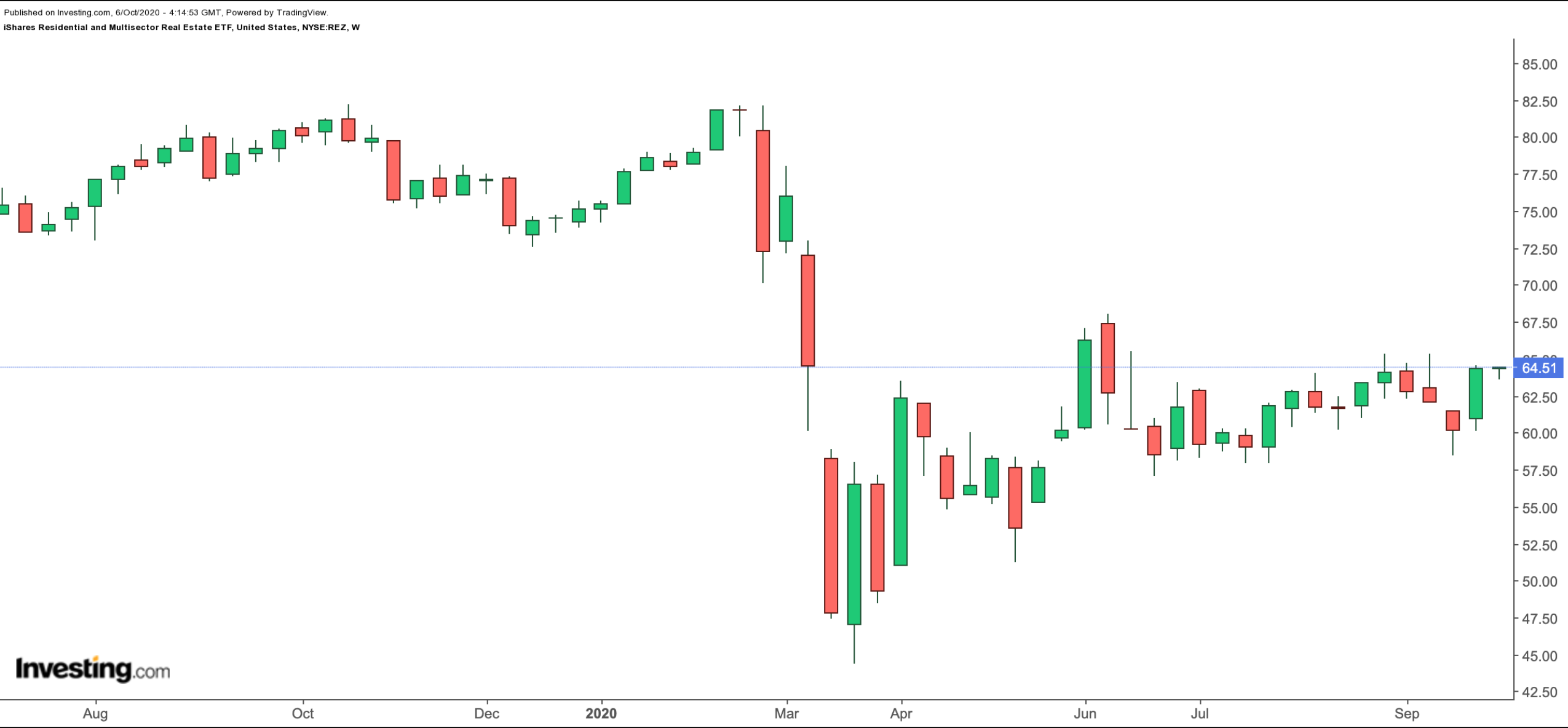Recent data highlight that segments of the U.S. real estate sector have been booming as people fearful of the ongoing pandemic spread and sheltering in place look to leave big cities and search for larger homes in less congested areas.
The National Association of Home Builders' Housing Market Index (HMI), released Sept. 16, showed builder confidence at an all-time high. The reading gauges homebuilder opinions regarding the level of current and future single-family home sales. A number above 50 indicates a positive outlook on home sales; below 50 points to a negative outlook. September's number came at 83, up 5 from the previous month's reading of 78, a number seen only once before in December 1998.
Similarly, the National Association of Realtors reported:
"Existing-home sales continued to climb in August, marking three consecutive months of positive sales gains."
The next existing-home sales figures are expected to be released Oct. 22.
Finally, the July S&P/Case-Shiller Home Price Index, which tracks changes in the value of the residential real estate in the U.S., showed robust homebuyer demand in July. Low mortgage rates have contributed to buyers’ purchasing power.
In past weeks, we introduced several exchange-traded funds (ETFs) that focus on Homebuilders and Real Estate Investment Trusts (REITs). We also discussed various catalysts, especially behind the housing sub-sector, and several important factors to consider when analyzing real estate stocks.
The last quarter of the year may bring challenges to the economy as well as broader equity market drops. Real estate is typically regarded as one of the most important sectors of the U.S. economy. Thus, revenues of housing and real estate companies may also be adversely affected in the coming months. Yet, despite occasional hiccups, housing and other real estate demands eventually pick up and growth returns. After all, spending on housing is one of the largest expenditures for a large number of Americans.
Today we continue our real estate discussion by taking a house tour of another ETF that may pique investors' interest in the industry.
iShares Residential and Multisector Real Estate ETF
Current Price: $$64.51
52-Week Range: $44.34 - $82.19
Dividend Yield: 4.03%
Expense Ratio: 0.48%
The iShares Residential and Multisector Real Estate ETF (NYSE:REZ) provides exposure to U.S. residential, health care and self-storage real estate equities.

REZ, which has 44 holdings, tracks the FTSE NAREIT All Residential Capped index. The fund started trading in 2007 and currently has around $380 million in net assets.
In terms of sub-sector allocation, residential REITs top the list with almost 49%. Next are health care REITs (31.02%) and specialized REITs (19.65%), such as student-housing REITs. On a side note, health care REITs are typically among the highest-yielding. Investors who would like to avoid certain real estate sub-sectors, such as retail, commercial or office, may find the allocation of this fund appealing.
The top 10 holdings make up about 60% of the ETF. These include: one of the largest self-storage services, Public Storage (NYSE:PSA); Welltower (NYSE:WELL), which concentrates on housing for seniors and outpatient medical properties; and multi-family apartment landlord AvalonBay Communities (NYSE:AVB).
Since the start of the year, REZ is down about 15%. But it has recovered more than 45% after seeing a 52-week low in March. We would look to buy the fund, especially if there is a decline toward $60.
On a final note, investors who are experienced with derivatives could be interested to know options are also available on the fund. For example, an at-the-money (ATM) or slightly in-the-money (ITM) covered call may be appropriate for hedging purposes. The premium for an ATM option due to expire on Jan. 15, 2021, is around $3.00. Such a strategy would help decrease overall portfolio volatility, provide some downside protection and allow investors to participate in a potential up move, too.
Bottom Line
In our experience, most REIT investors are not stock speculators. They are typically interested in the passive income offered by these investment vehicles.
However, for those market participants who do not think now is the time to buy into REITs, there are several inverse ETFs that could enable them to speculate on daily declines. For example, the ProShares Short Real Estate (NYSE:REK) aims to achieve daily investment results that equate to the inverse (-1x) of the Dow Jones U.S. Real Estate Index's daily performance.
Finally, those speculators who would like to add leverage to their daily bearish bets may want to research the ProShares UltraShort Real Estate (NYSE:SRS) or the Direxion Daily MSCI Real Estate Bear 3X Shares (NYSE:DRV). These inverse and leveraged funds are only appropriate for experienced traders who want to take a short-term view on the industry.
